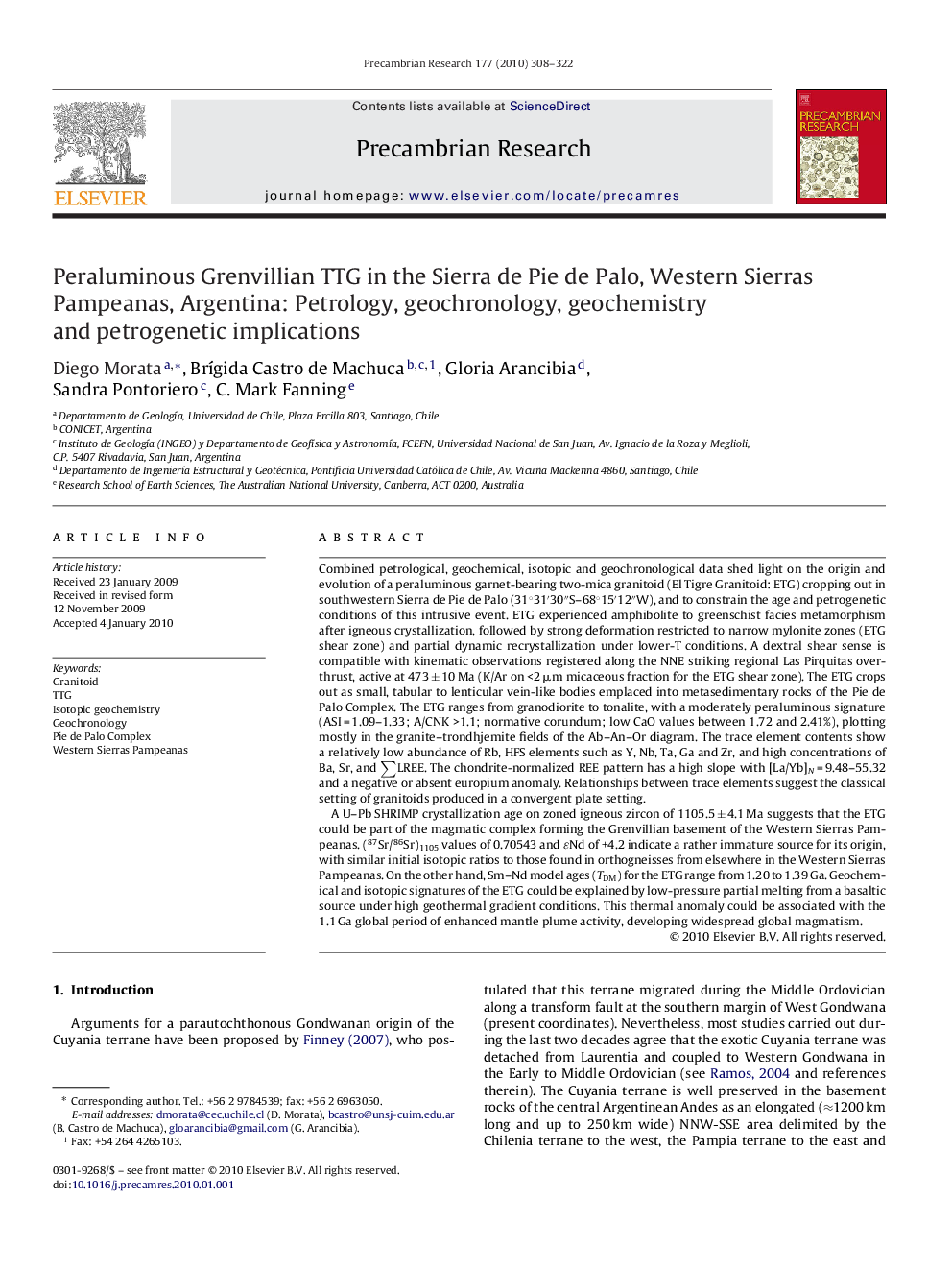| کد مقاله | کد نشریه | سال انتشار | مقاله انگلیسی | نسخه تمام متن |
|---|---|---|---|---|
| 4724066 | 1639681 | 2010 | 15 صفحه PDF | دانلود رایگان |

Combined petrological, geochemical, isotopic and geochronological data shed light on the origin and evolution of a peraluminous garnet-bearing two-mica granitoid (El Tigre Granitoid: ETG) cropping out in southwestern Sierra de Pie de Palo (31°31′30″S–68°15′12″W), and to constrain the age and petrogenetic conditions of this intrusive event. ETG experienced amphibolite to greenschist facies metamorphism after igneous crystallization, followed by strong deformation restricted to narrow mylonite zones (ETG shear zone) and partial dynamic recrystallization under lower-T conditions. A dextral shear sense is compatible with kinematic observations registered along the NNE striking regional Las Pirquitas overthrust, active at 473 ± 10 Ma (K/Ar on <2 μm micaceous fraction for the ETG shear zone). The ETG crops out as small, tabular to lenticular vein-like bodies emplaced into metasedimentary rocks of the Pie de Palo Complex. The ETG ranges from granodiorite to tonalite, with a moderately peraluminous signature (ASI = 1.09–1.33; A/CNK >1.1; normative corundum; low CaO values between 1.72 and 2.41%), plotting mostly in the granite–trondhjemite fields of the Ab–An–Or diagram. The trace element contents show a relatively low abundance of Rb, HFS elements such as Y, Nb, Ta, Ga and Zr, and high concentrations of Ba, Sr, and ∑LREE. The chondrite-normalized REE pattern has a high slope with [La/Yb]N = 9.48–55.32 and a negative or absent europium anomaly. Relationships between trace elements suggest the classical setting of granitoids produced in a convergent plate setting.A U–Pb SHRIMP crystallization age on zoned igneous zircon of 1105.5 ± 4.1 Ma suggests that the ETG could be part of the magmatic complex forming the Grenvillian basement of the Western Sierras Pampeanas. (87Sr/86Sr)1105 values of 0.70543 and ɛNd of +4.2 indicate a rather immature source for its origin, with similar initial isotopic ratios to those found in orthogneisses from elsewhere in the Western Sierras Pampeanas. On the other hand, Sm–Nd model ages (TDM) for the ETG range from 1.20 to 1.39 Ga. Geochemical and isotopic signatures of the ETG could be explained by low-pressure partial melting from a basaltic source under high geothermal gradient conditions. This thermal anomaly could be associated with the 1.1 Ga global period of enhanced mantle plume activity, developing widespread global magmatism.
Journal: Precambrian Research - Volume 177, Issues 3–4, March 2010, Pages 308–322